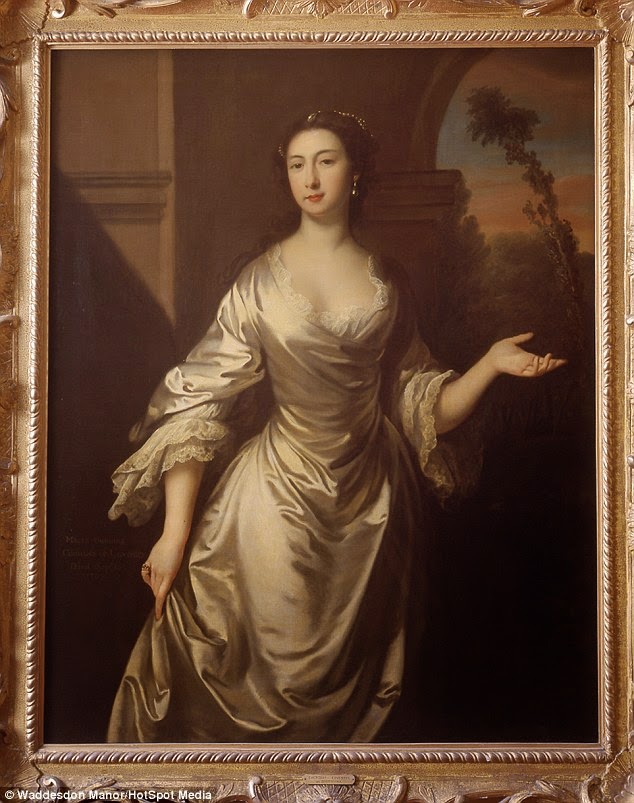By Susan F. Craft
Author of the SIBA Award Winning Revolutionary War Romantic Suspense,
The Chamomile
 |
| Lady Dawlrymple by Gainsborough (an example of pale skin, rouged cheeks and lips, and dark eyebrows) |
The average colonial American woman, whether due to a lack of money, time, incentive, or religious reasons and cultural mores, wore little or no makeup.
European women who visited America from places where makeup was common among the upper classes, often commented in their letters and diaries about this.
Colonial women did apply skin treatments that were intended to be washed off. Here’s one concoction for a cleanser made of a paste of dried almonds:
Beat any quantity you please of Sweet and Bitter Almonds in a marble mortar, and while beating, pour on them a little Vinegar in a small stream to prevent their turning oily; then add 2 drachms of storax in fine powder, 2 drachms of white Honey, and 2 Yolks of Eggs boiled hard; mix the whole into a paste.
Women, mostly wealthy, who were attentive to their looks did the following:
- For pale, waifish skin
Trace the veins with a blue pencil
- Glistening eyes
- Lip Color
Use carmine red, a color derived from cochineal beetles imported from Central
America (these beetles are used in lipstick today!);
 |
| cochineal bettle |
Vermilion (ground from cinnabar and including mercury) or creuse – both toxic
- Blush
cornstarch;
Puncture one’s finger and use the blood for rouge (Ee-ew!)
Safflower, wood resin, sandalwood, and brazilwood mixed with greases, creams,
or vinegars to create a paste
- Mascara/Eyeliner
blindness)
- Anti-aging skin creams
- Lip Plumpers
- Perfume/Scents
used to mask the smells of the streets
- Acne Products
(which is not advisable)
Recipe for Lead Powder
Several Thin Plates of Lead
A Big Pot of Vinegar
A Bed of Horse Manure
Water Perfume and tinting agent
Steep the lead in the pot of vinegar, and rest it in a bed of manure for at least three weeks. When the lead finally softens to the point where it can pounded into a flaky white powder (chemical reaction between vinegar and lead causes lead to turn white), grind to a fine powder. Mix with water, and let dry in the sun. After the powder is dry, mix with the appropriate amount of perfume and tinting dye.
The French physician Deshais-Gendron believed in 1760 that pulmonary lung disease among high-born ladies was associated with frequent use of lead face paint and rouge.
 |
| Kitty Fisher |
During the third quarter of the 18th century, dark eyebrows became all the rage. Over time, lead-based cosmetics caused hair-loss at the forehead and over the brows, resulting in a receding hairline and a bare brow. It became the custom as early as 1703 to trap mice and use their fur for artificial eyebrows, which were glued on. Sometimes, the glue did not always adhere well.
In 1718, Matthew Prior wrote a poem about eyebrows. Here’s the last stanza:
On little things, as sages write,
Depends our human joy or sorrow;
If we don’t catch a mouse to-night,
Alas! no eyebrows for to-morrow.




Sort of makes one wonder what we are using these days that are killing us. Thanks Susan.
ReplyDeleteI agree, Janet. Also, if we spent as much time working on our hearts as we do on our looks, what a different world this would be.
ReplyDeleteYes, that would be a BIG difference Susan!
DeleteBlessings,Tina
Susan,
ReplyDeleteThis is a very interesting article. I had no idea what went into the makeup of those who wore it. I can't imagine using some of those products.
Blessings, Tina
Tina, I agree about not using some of those products. I guess it was a matter of what you had handy, but ee-w on some of it.
ReplyDeleteeeew,, trap mice and use their fur for artificial eyebrows, no thanks LOL
ReplyDeleteGreat blog today, always learn something new here ! !
Wasn't the poem about the eyebrows a hoot!
ReplyDeleteAmazing article, Susan! Loved all the details. Well, I certainly would have been stylish with my pale ivory skin and black eyebrows! No need for me to have powdered or applied anything to darken my brows. Maybe that's why I like the colonial era--I might have been fashionable then ;)
ReplyDeleteYou're a lovely person exactly as you are, Carrie. I'm glad you liked the post.
ReplyDelete